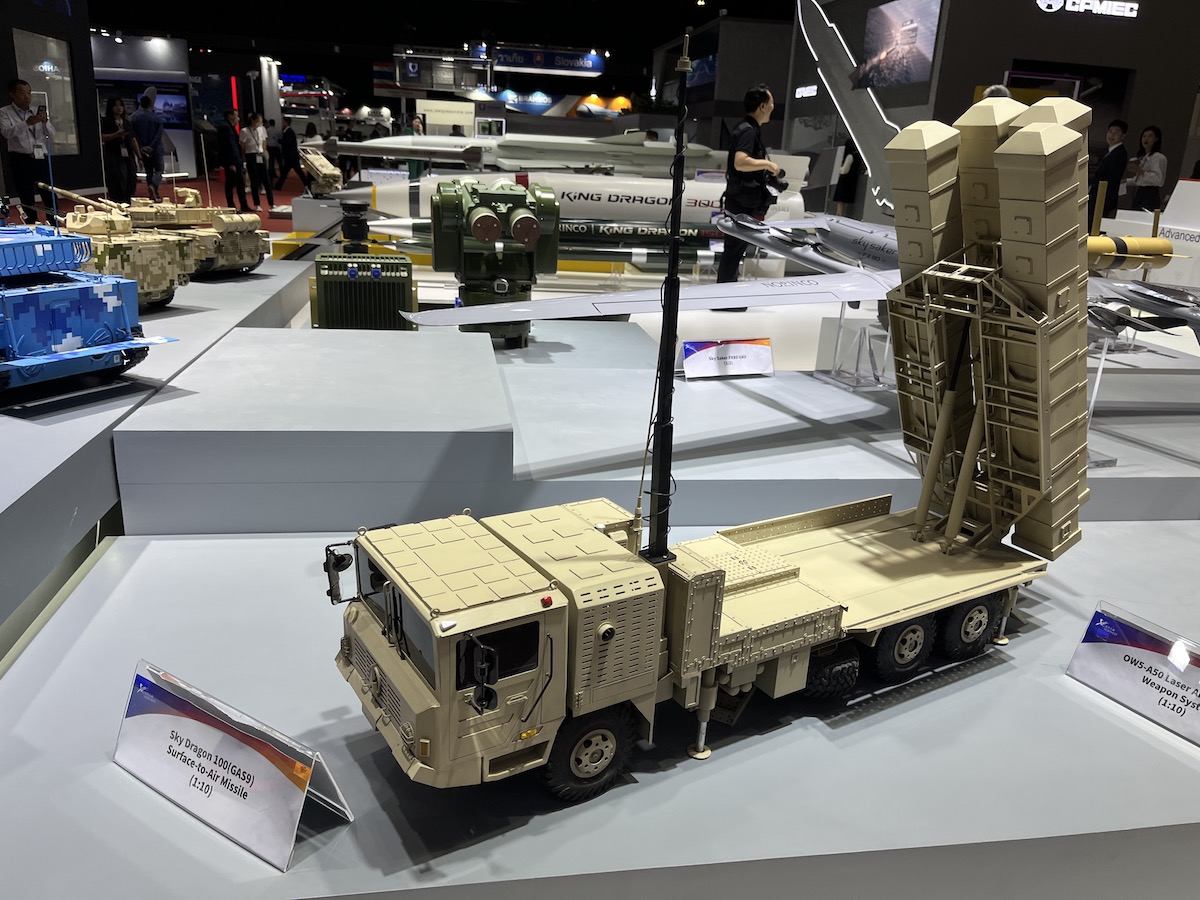China’s Air Defence Systems Expand Portfolio
CHINA’S defence industry continues to push the boundaries of short-range air defence innovation, focusing on a new generation of systems optimised for mobility, affordability, and adaptability against evolving aerial threats such as drones, helicopters, and low-flying aircraft.
At the forefront of this development is the China North Industries Corporation (NORINCO), one of the world’s largest defence conglomerates spearheading Beijing’s expanding land warfare capability portfolio. NORINCO recently introduced a compact and lightweight variant of the Yitian short-range air defense system, now integrated on a Yema 4×4 off-road vehicle chassis.
The system pairs an armored vehicle for the crew compartment with launchers modified for TY-90–type missiles intended to intercept low- and ultra-low-altitude helicopters, unmanned aircraft and high-speed cruise missiles, the state owned land systems manufacturer said in a recent unveiling of the compact system.
The state-owned land systems manufacturer said the Yitian is designed for high mobility and easy operation. The launcher and fire-control suite is based on a modified Yema 4×4 chassis, enabling off-road deployment from dispersed and littoral areas where larger systems cannot operate. NORINCO added that the package was specifically configured to meet the demands of short-range air defence in complex terrain and congested littoral areas.
Analysts say this platform represents a significant evolution in the Yitian family — a design that blends civilian automotive versatility with battlefield lethality, engineered to operate effectively across dispersed or littoral zones where larger air defence vehicles may face deployment constraints.
The system directly addresses the emerging challenge of low-altitude asymmetric threats, especially the proliferation of unmanned aerial vehicles and precision-guided munitions in modern conflicts.
By leveraging a commercially-derived chassis, NORINCO signals a clear shift in strategy — towards producing cost-efficient, export-ready SHORAD platforms that appeal to a wide range of military forces from Asia to Africa.
The Yitian (meaning “Sky Swallow”) first entered public view in 2004 as a mobile short-range surface-to-air missile system (SHORAD) designed to shield mechanized troops, command posts, and critical infrastructure against aerial threats flying below radar cover.
The original Yitian has been compared to the American AN/TWQ-1 Avenger and the French SANTAL, but experts say it remains a distinctly Chinese innovation, tailored to integrate with People’s Liberation Army (PLA) networked command systems.
Built around the TY-90 missile, the system’s modular structure enabled NORINCO to mount it on a variety of platforms — from the Type 92 (WZ-551) 6×6 armored personnel carrier, to the EQ2050 4×4 off-road vehicle, and even in towed configurations paired with the “Giant Bow-II” anti-aircraft gun system.
New FK-3000 Air Defence Combat Vehicle
The People’s Liberation Army has begun fielding a new air defence combat vehicle designed to provide short range defence against drone attacks, the FK-3000, which was seen during the massive September 3 parade in Beijing celebrating the end of World War II.
The procurement of the system appears to reflect one of the multiple ways in which China’s armed forces have responded to lessons from the ongoing Russian-Ukrainian War, during which the use of drones for both attacks and for reconnaissance have played very central roles in both sides’ war efforts.
It was reported that the air defence combat vehicle has some similarities to the Russian Pantsir system, which has been used extensively for anti-drone duties in Syria, Libya and in the Ukrainain theatre, and proven highly effective. The Chinese system appears to be more heavily specialised towards defending targets against drones, and as a much newer design developed by a defence sector that is considerably more advanced it is expected to have a superior performance.
The FK-3000 uses a three-axle all-wheel-drive vehicle with an armoured cab, and two launch pods each carrying 12 short-range missiles, as well as a 30mm automatic cannon. Its fire controls allow of the engagement of multiple targets simultaneously. The use of a cannon allows the vehicle to provide a defence against lower value drones such as quadcopter without expending costly missiles, providing a two layered defence. The system has an engagement range of up to 1200 meters, and can integrate a number of different missile types. It is expected to be deployed both to defend ground units on or near the frontlines, and to protect key military facilities and critical infrastructure. China has complemented the development of the FK-3000 with the operationalisation of a number of laser weapons systems, such as the new OW5-A50 system unveiled recently. As laser weapons technologies improve, it is expected. That the utility of cannon and missiles for anti-drone duties will diminish.


